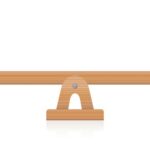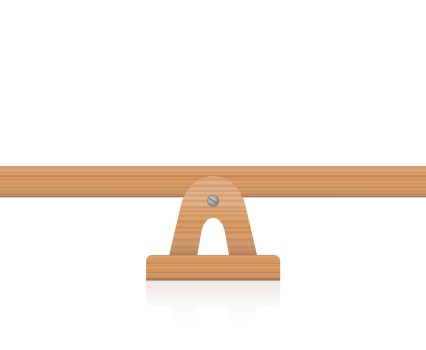To print this article, all you need is to be registered or login on Mondaq.com.
On February 12, 2024, the Court of Appeal of Quebec handed down
its decision in Société d’assurance
Beneva
inc. c. Bordeleau,1 dealing
in particular with the burden of proof incumbent on an insurer when
it denies coverage on the basis of an insured’s intentional
fault, and an award of damages against an insurer for breach of its
duty of good faith.
The facts
This decision was rendered further to a dispute between
Société d’assurance Beneva inc. (hereinafter
the “Insurer”) and some of its insureds, including
Mr. Michel Bordeleau, the owner of a multi-storey rental
building that was damaged by fire. He lived in one of the units
with his parents.
According to the uncontested expert evidence presented, the fire
originated in one of the storage spaces in the basement of the
building, which was assigned to a lessee couple. Access to the
basement and all storage spaces was locked. The cause of the fire
was deemed to be intentional, given the traces of accelerant found
in the area of the fire’s origin. The instigator or
instigators were not identified.
On November 21, 2016, 60 days after the fire, the Insurer denied
coverage because of the intentional nature of the fire, which it
attributed to its insured, Mr. Bordeleau. A few months later,
on March 22, 2017, it reached an agreement with
Mr. Bordeleau’s hypothecary creditor. The subrogation
release provides for the Insurer’s payment of the balance of
the hypothecary debt of $149,720.99, and subrogation to the
creditor’s rights up to the amount paid.
Mr. Bordeleau, in his belief that he had been harmed by the
Insurer’s decision, instituted legal proceedings to recover
the insurance benefit to which he claimed to be entitled, while
also claiming damages. The Insurer filed a cross-application for
recovery of the balance paid to the hypothecary creditor.
The trial
The trial judge, relying on the evidence, concluded that
although the fire was intentional in nature, the Insurer had not
discharged its burden of establishing the insured’s
involvement in the fire.
Taking this conclusion into account, she then proceeded to
analyze the plaintiffs’ claim and to weigh the damages in
light of the evidence and the limits of the insurance policy. In
particular, she ruled in favour of Mr. Bordeleau’s claim
for damages for the building, the amount of which was admitted. In
addition, she ordered the Insurer to pay $15,000.00 in damages for
nuisance and inconvenience caused by its conduct, which she
considered faulty. This conclusion was based on the Insurer’s
duty to act in good faith, to consider the facts and act on their
basis, and to conduct a full investigation, duty which the Insurer
had breached by failing to sufficiently follow-up on leads that
could have identified who was responsible for the fire. In order to
deny coverage, clear and compelling evidence of the insured’s
involvement, going beyond mere suspicion, was necessary. Given the
sometimes implausible and sometimes contradictory testimonies of
the people met during the investigation, there was no such
evidence. In other words, the claims adjuster had jumped to
conclusions.
In light of her conclusions, the trial judge dismissed the
Insurer’s cross-application, which she deemed to be
unfounded, without giving further reasons.
The appeal
The Court of Appeal first refrained from intervening in light of
the Superior Court’s conclusions regarding the failure to
demonstrate Mr. Bordeleau’s involvement in the fire. It
did however intervene on the damages awarded for nuisance and
inconvenience suffered by the insureds, and pointed out the
following:
- [40] [translation] Firstly, apart from the strict mathematical
calculation of the amounts payable, and perhaps other technical
aspects not requiring the exercise of judgment, the processing of a
claim is an obligation of means, not one of result. The fact that a
court found at the end of a trial held many years after the
incident that an insurer should have covered in the first place
obviously does not mean that the insurer necessarily committed a
fault other than its refusal to pay, making it civilly liable, let
alone that it acted in bad faith. - [41] In this case, there was nothing in the evidence to support
a finding of fault or breach of the duty of good faith. - [42] On the contrary, there is enough evidence to conclude that
the investigation by the appellant and its experts, which led to
the denial of coverage, was not botched. . . .
In the opinion of the Court of Appeal, the evidence showed that
the Insurer’s investigation had been done in a conscientious
manner, in particular because it had transferred the claim file to
a special investigative unit, mandated a fire origin and cause
expert and external investigators, and interviewed many witnesses
who could have provided information on the circumstances of the
incident. Moreover, it had no allegations that the Insurer had
failed to consider exculpatory evidence against its insured.
In this context, although it took several years for the insured
to obtain his due, with all the inconveniences of going through
proceedings, the Insurer’s conduct could not be considered
offending or revealing of bad faith. No damages could be
awarded.
Lastly, the Court of Appeal took a closer look at the question
of the Insurer’s subrogation to the hypothecary
creditor’s rights, which was little discussed in the judgment
under appeal. Reiterating the fundamental principle in property and
casualty insurance that the indemnification of an insured cannot
result in enrichment, the Court of Appeal concluded that dismissing
the Insurer’s cross-application would have such an effect. In
addition to receiving an insurance benefit for the damages
sustained, Mr. Bordeleau would also have had seen his
hypothecary debt discharged. This would have given him a clear
advantage. In this case, the benefit paid to the hypothecary
creditor needed to be deducted from the damages claimed by the
insured. The trial judge’s finding were thus revised
accordingly.
Conclusion
Despite the clear principles addressed in this case, the Court
of Appeal’s analysis points to practical difficulties that
insureds and insurers can encounter when dealing with similar
claims. It points to the coexistence of two factors that can be
difficult to balance: First, the burden of proof where coverage is
denied on the basis of the insured’s intentional fault, and
second, the insurer’s obligation of means in processing the
associated claim. The dismissal of a coverage defence does not in
itself warrant awarding damages.
Footnote
1. Société d’assurance Beneva
inc. c. Bordeleau, 2024 QCCA
171
The content of this article is intended to provide a general
guide to the subject matter. Specialist advice should be sought
about your specific circumstances.
#Insurer #Ordered #Pay #Damages #Court #Appeal #Intervenes #Insurance #Laws #Products










